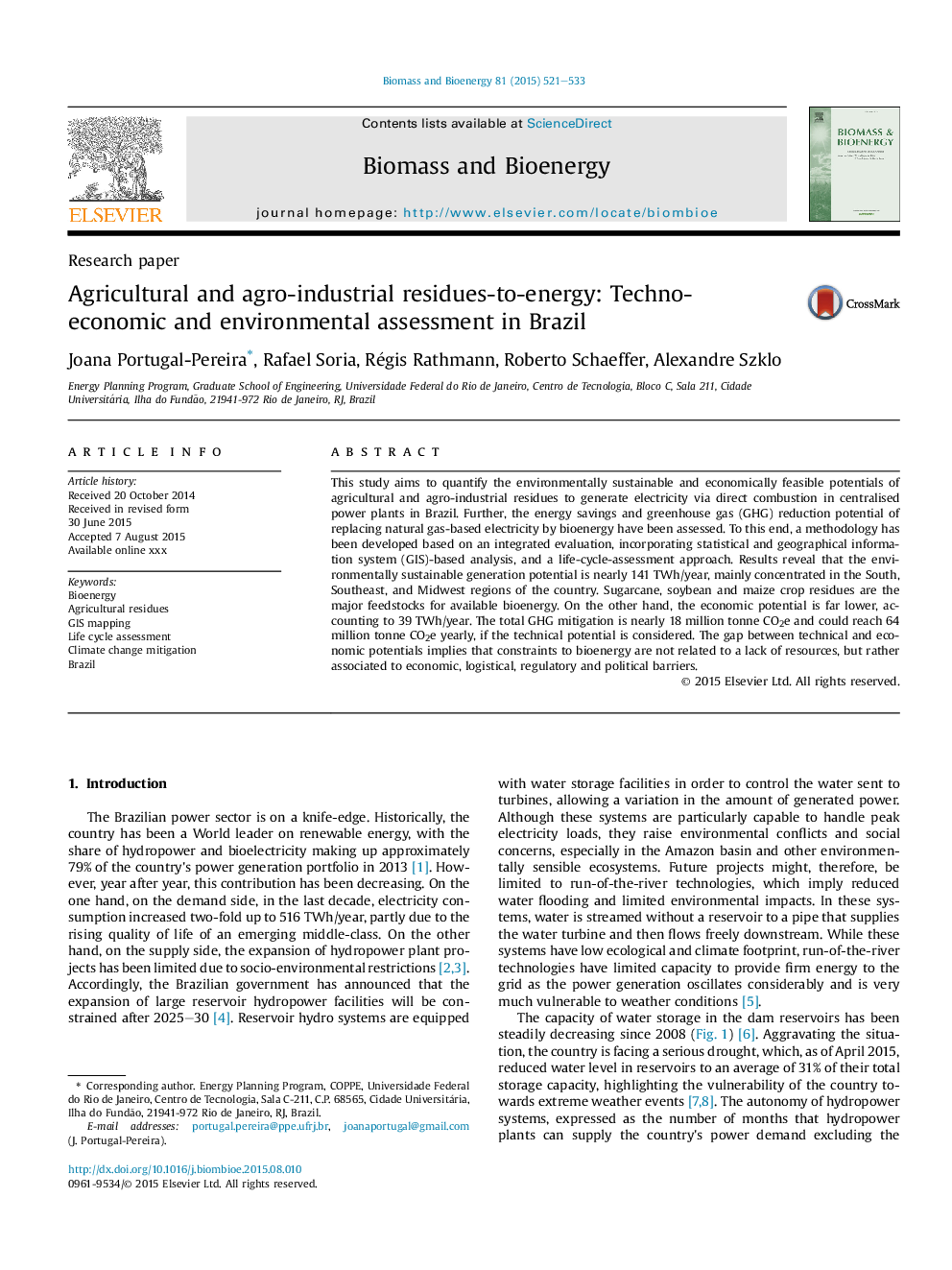| Article ID | Journal | Published Year | Pages | File Type |
|---|---|---|---|---|
| 7063886 | Biomass and Bioenergy | 2015 | 13 Pages |
Abstract
This study aims to quantify the environmentally sustainable and economically feasible potentials of agricultural and agro-industrial residues to generate electricity via direct combustion in centralised power plants in Brazil. Further, the energy savings and greenhouse gas (GHG) reduction potential of replacing natural gas-based electricity by bioenergy have been assessed. To this end, a methodology has been developed based on an integrated evaluation, incorporating statistical and geographical information system (GIS)-based analysis, and a life-cycle-assessment approach. Results reveal that the environmentally sustainable generation potential is nearly 141Â TWh/year, mainly concentrated in the South, Southeast, and Midwest regions of the country. Sugarcane, soybean and maize crop residues are the major feedstocks for available bioenergy. On the other hand, the economic potential is far lower, accounting to 39Â TWh/year. The total GHG mitigation is nearly 18Â million tonne CO2e and could reach 64 million tonne CO2e yearly, if the technical potential is considered. The gap between technical and economic potentials implies that constraints to bioenergy are not related to a lack of resources, but rather associated to economic, logistical, regulatory and political barriers.
Keywords
Related Topics
Physical Sciences and Engineering
Chemical Engineering
Process Chemistry and Technology
Authors
Joana Portugal-Pereira, Rafael Soria, Régis Rathmann, Roberto Schaeffer, Alexandre Szklo,
